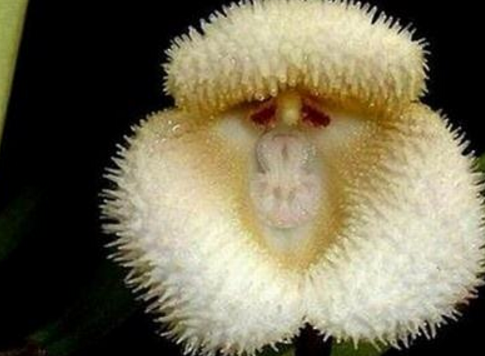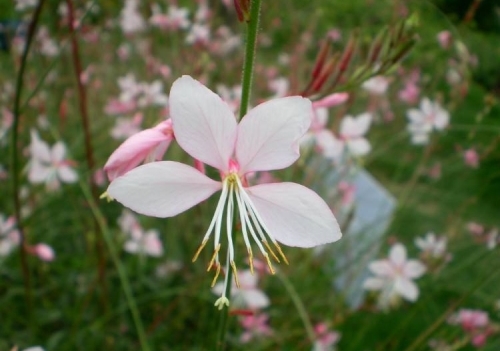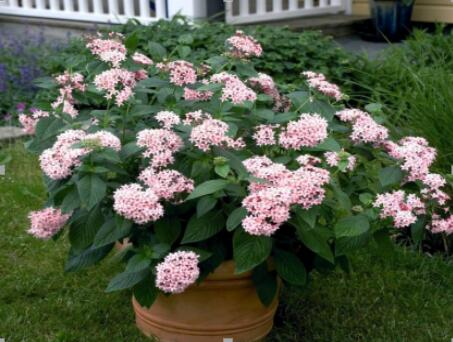Disease control of monkey-faced small dragon orchid
1. Wilt disease
Symptoms: wilt disease often occurs in the season of high temperature and humidity, and the leaves turn yellow and wilt, which is very disadvantageous to plant growth.
Control methods: to cut off the diseased leaves in time, do not make the plant too wet, you can choose 2000 times of propiconazole emulsion to spray the base or irrigate the root.

two。 Anthrax
Symptoms: anthrax mostly occurs in the plum rain season, when the disease occurs, there are round reddish-brown patches on the leaves, the disease spots turn dark brown in the later stage, and gangrene occurs in severe cases.
Solution: first cut off the dead leaves, no disease or the initial stage of the disease can be sprayed with 50% anthrax Ling EC 600 times, pay attention to ventilation.
3. Root rot disease
Symptoms: part of the root system rotted and blackened, hindering the normal growth of the plant. It is mainly due to poor ventilation of basin soil matrix, overwatering, cold weather or heavy fertilizer injury.
Solution: new seedlings should not be watered at the head, should be ventilated and kept dry, and 50% Gen Yuling liquid should be used to irrigate the roots when the disease occurs.
How to control diseases and insect pests of monkey-faced small dragon orchid
Monkey face small dragon orchid likes semi-shady, moist, ventilated environment, more hardy, but can not suffer frost damage. The flowering period of Monkey-faced orchid is short, and the single flower is 5-Mel for 7 days. After the flower withered, the pedicel should be cut off from the base to facilitate the growth of new buds. It has strong branching, strange and large flowers, rich colors, and the flower can blossom in any season, giving off a smell similar to that of mature oranges. So monkey face small dragon orchid has disease and insect pest how to treat? The following is to introduce the prevention and control methods of diseases and insect pests of monkey-faced small dragon orchid.
Pest control methods of monkey-faced small dragon orchid
1. Aphids: often endanger young leaves and buds in groups, sucking juice with nymphs and adults. A small amount can be brushed off with a brush to treat spraying 1000 times of aphid lice wettable powder, or 2.5% deltamethrin EC 2000 × 3000 times, or 40% methomyl 1000 times or chloramidine 1500 times, etc.
2. Scale insects: adults and nymphs absorb juice on petiole, leaf base and leaf surface to produce macula. Scale insects are easy to breed in a poorly ventilated environment. Make sure you are well ventilated. In the event of the occurrence of scale insects, 1000 times of 25% buprofezin wettable powder or 800 ~ 1000 times of 40% EC should be sprayed in time, once every 7 days for 2 or 3 times in a row.
3. Snails and slugs: they often nibble on new buds, leaves, buds and roots at night. From June to October, timely prevention and control should be carried out in humid environment. If you sprinkle lime powder on the ground, you can also spread it where it is infested with 8% Miaoling granules, or spray pesticides such as trichlorfon on the leaves.
Disease control methods of monkey-faced small dragon orchid
1.: the disease develops rapidly in the season of high temperature and humidity, especially after summer rain. The leaves of the plant turned yellow and wilted, and the whole leaves rotted. Cut off the dead and diseased leaves and pay attention to the plant material not to be too wet. Choose 2000 times solution of carbendazim or 2000 times solution of propiconazole emulsion to spray base or root irrigation. Or spray 50% carbendazim wettable powder 1000 times, or 40% thiophanate methyl suspension 2000 times, or 2.5% Xerox suspension 2000 times, once every 7 to 10 days for 2 times in a row.
2. Anthrax: it often occurs in the rainy season. In the early stage of the disease, round and oval reddish-brown plaques appeared on the leaves, and in the later stage, the plaques turned dark brown, and in severe cases, there was gangrene. Cut off the dead leaves and pay attention to ventilation. Can be sprayed with chlorothalonil, methyl thiophanate, mancozeb and other wettable powder 600-1000 times, once every 5-7 days, twice in a row. Before or at the initial stage of the disease, 50% anthrax Ling EC can be sprayed 600 times, once every 10 days, continuous prevention for 3 or 4 times.
3. White silk disease mostly occurs in the high temperature and rainy season from August to September. In the early stage, the base of the orchid leaves turned brown and rotted, producing white silk mycelium, and in severe cases, the whole leaf clump withered and died. The greenhouse should be ventilated and the distance between pots and flowers should not be too close. At the time of onset, you can use 800-1000 times liquid for blue disease treatment, or 1000 times for 50% Fudoning, or 2000 times for 2000 times, once a week for 3 times in a row. The roots of the seedlings can also be watered with 1% copper sulfate, and the infected potted flowers should be cleared out of the greenhouse and buried.
4. Leaf blight: it often occurs in the case of high temperature and high humidity, and small black spots are produced near the leaf tip or at the front of the leaf, and the disease spot gradually expands into the whole leaf, and finally wither and fall. When symptoms were found, the diseased leaves were removed immediately, and 800 times of chlorothalonil or 500 times of mancozeb were sprayed at the same time.
5. Tillering rot mainly occurs on tillering buds, followed by leaves. In the early stage, the base of the bud showed a disease spot the size of mung bean, and it was easy to infect the leaf surface when it was hot and humid, resulting in dark brown water-stained patches. On continuous rainy days in summer, it is easy to occur if the fertilizer and water are not managed properly, and the basin soil is highly humid and heavy. Soil water content should be controlled. When the new buds are 4-5 cm high, spraying 1000 times of 0.01% boric acid solution or Shikujing can also be prevented by 1000 times of agricultural streptomycin.
6. Root rot: some or all of the roots rot and blacken, and the plant grows poorly. The main causes are blockage of drainage hole at the bottom of the basin, poor ventilation of matrix waterlogging, excessive watering, cold weather or heavy fertilizer injury. Dredge the drainage hole, do not pour the head water during the growing period of the new seedling, and ventilate in time after spraying water on the leaf surface to keep the leaf base dry. Avoid excessive nitrogen fertilizer during the growing period, and irrigate the roots with 50% Ganfuling wettable powder 1000-1500 times or 15% carbendazim water 600 times 800 times, once every 7-10 days, 3 times 4 times in a row.
Common diseases and control methods of monkey-faced small dragon orchid
Common diseases of monkey-faced small dragon orchid: manifestation of wilt disease
The disease develops rapidly in the season of high temperature and humidity, especially after summer rain. The leaves of the plant turned yellow and wilted, and the whole leaves rotted. Cut off the dead and diseased leaves and pay attention to the plant material not to be too wet.
Prevention and cure method
Choose 2000 times solution of carbendazim or 2000 times solution of propiconazole emulsion to spray base or root irrigation. Or spray 50% carbendazim wettable powder 1000 times, or 40% thiophanate methyl suspension 2000 times, or 2.5% Xerox suspension 2000 times, every 7-10 days, 2-3 times in a row.
Common diseases of monkey-faced small dragon orchid: manifestations of anthracnose
It often occurs in the rainy season. In the early stage of the disease, round and oval reddish-brown plaques appeared on the leaves, and in the later stage, the plaques turned dark brown, and in severe cases, there was gangrene.
Prevention and cure method
Cut off the dead leaves and pay attention to ventilation. Can be sprayed with chlorothalonil, methyl thiophanate, mancozeb and other wettable powder 600-1000 times, once every 5-7 days, twice in a row. Before or at the initial stage of the disease, 50% anthrax Ling EC can be sprayed 600 times, once every 10 days, continuous prevention for 3-4 times.
Common diseases of monkey-faced small dragon orchid: manifestation of white silk disease
Most of them occur in the high temperature and rainy season from August to September. In the early stage, the base of the orchid leaves turned brown and rotted, producing white silk mycelium, and in severe cases, the whole leaf clump withered and died. The greenhouse should be ventilated and the distance between pots and flowers should not be too close.
Prevention and cure method
At the onset of the disease, you can use 800-fold solution of blue disease, or 1000-fold solution of 50% Fudoning, or 2000-fold solution of 75% metoclopramide, once a week, 3-5 times in a row. The roots of the seedlings can also be watered with 1% copper sulfate, and the infected potted flowers should be cleared out of the greenhouse and buried.
Common diseases of monkey-faced small dragon orchid: symptoms of leaf blight
Most of the disease occurred in the case of high temperature and humidity, small black spots were produced near the leaf tip or at the front of the leaf, and the disease spot gradually expanded into the whole leaf, and finally withered and fell.
Prevention and cure method
When symptoms were found, the diseased leaves were removed immediately, and 800 times of chlorothalonil or 500 times of mancozeb were sprayed at the same time.
Common diseases of monkey-faced small dragon orchid: manifestation of tiller rot disease
It mainly occurs on tillering buds, followed by leaves. In the early stage, the base of the bud showed a disease spot the size of mung bean, and it was easy to infect the leaf surface when it was hot and humid, resulting in dark brown water-stained patches. On continuous rainy days in summer, it is easy to occur if the fertilizer and water are not managed properly, and the basin soil is highly humid and heavy.
Prevention and cure method
When the new buds are 4-5 cm high, spray 0.01% boric acid solution 1000 times or Shikujing, or use agricultural streptomycin 1000 times solution to prevent and cure.
Common diseases of monkey-faced small dragon orchid: manifestation of root rot disease
Some or all of the roots are rotten and black, and the plants are not growing well. The main causes are blockage of drainage hole at the bottom of the basin, poor ventilation of matrix waterlogging, excessive watering, cold weather or heavy fertilizer injury.
Prevention and cure method
Dredge the drainage hole, do not pour the head water during the growing period of the new seedling, and ventilate in time after spraying water on the leaf surface to keep the leaf base dry. Avoid excessive nitrogen fertilizer during the growing period, and irrigate the roots with 1000-1500 times of 50% Gengfuling wettable powder or 15% carbendazim water, once every 7-10 days, 3-4 times in a row.
- Prev

The breeding method of Thousand Birds
Sowing and propagation of thousand birds are suitable for sowing in autumn, and the suitable temperature is 15-20 ℃, and the seeds can take root and germinate. It grows strongly and is very suitable for group planting. But if you want to plant a thousand birds well, you must pay attention to the temperature, soil, light and ventilation.
- Next

Matters needing attention in the cultivation of starry flowers
(1) it is necessary to give more sun to the stars and flowers than to the shade, so we should not always put the stars indoors, especially in winter, put the stars on the balcony so that they can get enough sunshine. (2) it is necessary to note that the temperature of watering is different from that of other plants. The leaves of star flowers are particularly sensitive to temperature.
Related
- Fuxing push coffee new agricultural production and marketing class: lack of small-scale processing plants
- Jujube rice field leisure farm deep ploughing Yilan for five years to create a space for organic food and play
- Nongyu Farm-A trial of organic papaya for brave women with advanced technology
- Four points for attention in the prevention and control of diseases and insect pests of edible fungi
- How to add nutrient solution to Edible Fungi
- Is there any good way to control edible fungus mites?
- Open Inoculation Technology of Edible Fungi
- Is there any clever way to use fertilizer for edible fungus in winter?
- What agents are used to kill the pathogens of edible fungi in the mushroom shed?
- Rapid drying of Edible Fungi

